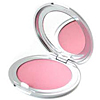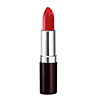How to Dispose of Make-up, Batteries & more
Today's Best Read:
Hazardous Items Haunting Your Household? How to Dispose of the Non-Disposable

What do we do with unused household medications? What about cosmetics? Cleaning supplies? Or batteries?
Earth Day is just around the corner, so we at CP Lab Safety set out to see what more we could do to take better care of our home turf. It didn’t take long to spot some areas in urgent need of improvement. Here in California we’ve gotten pretty good at separating our waste items and taking out the recycling with the trash. But there are still plenty of things collecting dust in our cupboards because we simply don’t have a clue where to go with them. What do we do, for example, with unused household medications? What about cosmetics? Cleaning supplies? Or batteries?
All of these things contain chemicals toxic to the environment. If we flush them down the sink or toilet, they poison our groundwater, but if we throw them in the trash and consign them to a heap somewhere, they can still come back to haunt us. Rainwater flows over landfills and into rivers and streams that we and other animals bathe in and drink from. When we eat fish or game, we consume the toxins that have poisoned them. And water off of landfills also joins the groundwater which nourishes our gardens and contributes to our drinking water. According to studies reported at wegreen-usa.org, a whopping 82% of landfills leak!
Disposemymeds.org warns, “More than 100 different pharmaceuticals have been detected in lakes, rivers, reservoirs and streams throughout the world.” And that’s just medicines, and doesn’t take into account other byproducts like methane, bleach, cadmium and ammonia. These things steadily leach off of our refuse like a karmic antagonist wreaking silent sabotage as its power swells toward armageddon. But if we can’t throw them away and we can’t recycle them, where on Earth do they go?
We made a phone call to the local pharmacy to see if they had a program to take back unused medications. To our surprise, they were totally ignorant to the concept. Many major electronics companies, like Apple and Acer, have established voluntary programs to “take back” their old electronics before they become e-waste. Some even compensate recyclers with discounts on new items. Organizations like e-stewards also regularly audit electronics companies to judge whether their e-waste ends up in landfills or, worse, third world countries. So why not something similar for pharmaceuticals?
The pharmacy referred us to the local police, who subsequently confirmed that they have a bin where we can unload old medications after removing them from the packaging. Rules will vary demographically, so check with local pharmacies and law enforcement. If no program exists, recommend it! Better yet, write to the manufacturer and ask them to collaborate with the pharmacy on a take-back program. You can also check out disposemymeds.org for help finding disposal programs or for more information.
Another household hazard is consumer cosmetics. Our company owner, Kelly, has three adult daughters and drawers overflowing with abandoned cosmetics. Used cosmetics may become contaminated with bacteria and could pose a source for infection, so hanging onto them beyond the recommended shelf life only adds unnecessary clutter. She decided to advise her daughters on environmental conscientiousness and to recommend clearing out what they don’t need. But this prompted the question, where do we go with the old stuff? According to ecolife.com, “The average woman uses 12 products daily” and with more than 112 million women in the US alone, that’s a growing mountain range of cosmetics! What to do?
A recent survey discovered that both men and women consider the optimal amount of makeup to be 40% less than the average woman applies to herself.
The first and best line of defense is to limit your consumption. Cultural movements like the “no makeup selfie” that even attracted Lady Gaga, and sociology studies are reducing the pressure on ladies to augment their natural beauty. A recent survey discovered that both men and women consider the optimal amount of makeup to be 40% less than the average woman applies to herself. But for the stuff that you actually use, make sure to get your money’s worth! Check out our handy reference chart, below, to learn more about the product life of popular cosmetics.
If you have unused cosmetics lying around, rather than throwing them in the trash you can always donate them to local women’s shelters, thrift stores, or sites like beautybus.org and dressforsuccess.org, which provide support to elderly, ill and disadvantaged men and women. Major Donation chains like Goodwill can’t accept previously opened cosmetics, but sites like makeupalley.com and projectbeautyshare.org allow users to exchange directly with other members.
 For the makeup you do use, much of the packaging can be recycled. Look for the triangular recycling icon and check out the number designation to determine the material and whether or not it qualifies. For the packaging that can’t be recycled, see if you can find your own alternative use for it. Many people have found success converting cleaned cosmetics containers to a variety of other uses. Here are some popular ideas: jewelry containers, paint jars, pill bottles, desktop organizers, or to carry small quantities of things while traveling.
For the makeup you do use, much of the packaging can be recycled. Look for the triangular recycling icon and check out the number designation to determine the material and whether or not it qualifies. For the packaging that can’t be recycled, see if you can find your own alternative use for it. Many people have found success converting cleaned cosmetics containers to a variety of other uses. Here are some popular ideas: jewelry containers, paint jars, pill bottles, desktop organizers, or to carry small quantities of things while traveling.
We live on a planet where everything is connected, so we can't afford to ignore the unintended consequences of human activities. Everything in nature exists in a balance. Our food, water and air resources are exponentially impacted by our every thoughtless action. As Albert Einstein said, "The world is a dangerous place to live; not because of the people who are evil, but because of the people who don't do anything about it."
"The world is a dangerous place to live; not because of the people who are evil, but because of the people who don't do anything about it."
Albert Einstein
CP Lab Safety was founded by Dr. Ron Najafi, a medicinal chemist. In 1996 he set out to prevent hazardous pollution in chemistry laboratories. CP Lab Safety's patented Safety Ecological funnel addresses the "open waste container" problem in chemical and pharmaceuticals industries. Today CP Lab Safety manufactures and distributes thousand of products that prevent pollution from going into soils, water and air. CP Lab Safety distributes fire safe cabinets, recycle bins of all kinds and many more environmental and personal laboratory safety products.
CP Lab Safety
Making Science Green!
Check out our list of resources below on how to dispose of household toxins!
Makeup Expiration Chart |
||||
|
3 to 6 months
|
 |
 |
||
|
Liquid eyeliner
|
Mascara
|
|||
|
12 months
|
 |
 |
||
|
Nail polish
|
Oil free foundation
|
|||
|
12-18 months
|
 |
 |
 |
 |
|
Concealer
|
Cream eye shadow
|
Cream blush
|
Cream foundation
|
|
|
18-24 months
|
 |
|||
|
Lip gloss
|
||||
|
24 months
|
 |
 |
 |
 |
|
Blush
|
Bronzer
|
Dry eyeliner
|
Lip liner
|
|
 |
 |
 |
||
|
Lipstick
|
Powdered eye shadow
|
Foundation
|
||
| As reported on ecolife.com | ||||
More Important Reads and Resources from CP Lab Safety…
Make Your Own Makeup
If you really want to help the planet, consider cutting out the middle-man altogether! Innovative youtubers are inspiring a renaissance of self-made makeup. Not only does this eliminate the need for new product packaging and environmentally unfriendly product distribution, as reported in our last Earth Day tribute, but it eliminates the mystery from what goes on your face and the long-term health concerns that entails. And not only is it safe, but to parphrase youtube user Colorful Canary in her video on Organic Cosmetic Foundation, “It’s completely lickable,” – a clear point in favor.
Youtube Make your own makeup Tutorials
Electronics Disposal (TVs, etc)
Check out this interactive map that shows the closest recycling locations for electronic devices by zip code.
Google E-Waste Recycling Near Me
Battery Disposal
According to the Call2Recycle website, they successfully recycled "over 11 million pounds of batteries in 2013," and best of all, "89 percent of people in the U.S. and Canada reside within a 10-mile radius of a Call2Recycle drop-off site"! Be sure to check them out.
Recyle Appliances & Electronics (Cell Phones, TVs, Cameras, Vacuums, etc)
According to BestBuy, they take all kinds of electronic items, right there at the store. Check them out!
Dispose My Meds
Disposemymeds.org reports: "Each year in the United States, more than 71,000 children aged 18 and younger are seen in emergency rooms for unintentional overdoses of prescription and over-the-counter drugs." Get those unused drugs out of the house and safely disposed of, today!
Proper Disposal of Unwanted Medicine
The FDA has put together this great resource for additional information and resources on disposal of medications:
Find a Women's Shelter
An easy-to-use State by state search resource for finding local Women's Shelters in need of cosmetic and other donations.
Trade & Recycle Cosmetics
There are lots of ways to get rid of your excess cosmetics, used and unopened! Check out these take-back and exchange programs, or recommend them to the make-up lover in your life!
Beauty Bus
Dress for Success
Project Beauty Share
What do Recycling Symbols Mean?
What are those numbers on the bottom of my plastic container? Find out what each number can tell you about the type of material your plastic is made from and how or whether or not it can be recycled.
